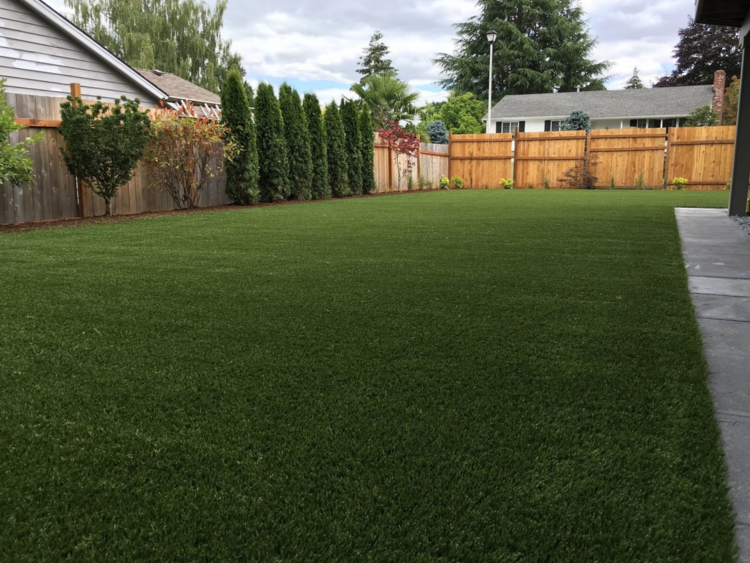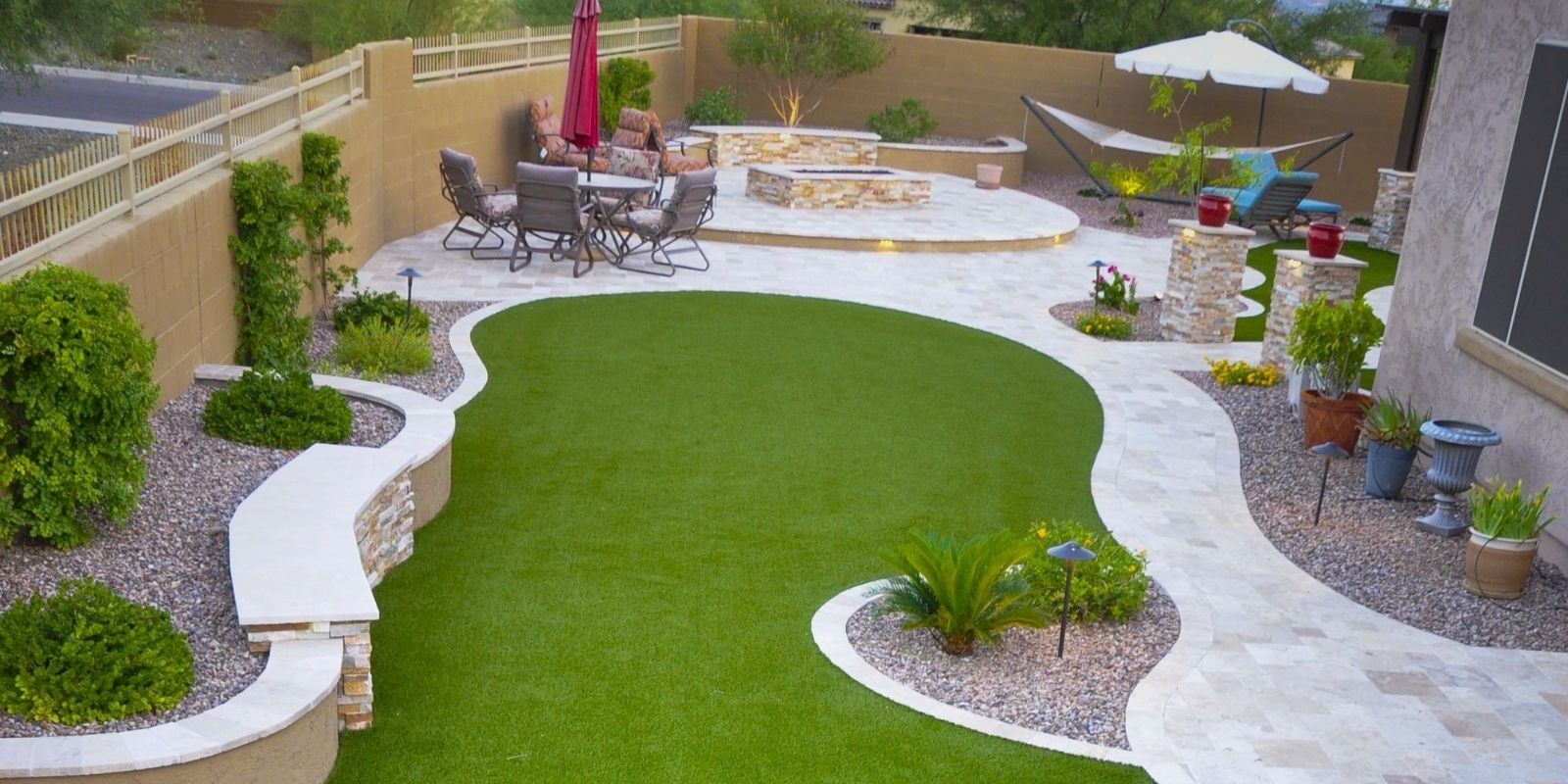See Why Homeowners Prefer Synthetic Grass for Lasting Landscaping Practices
As home owners progressively focus on sustainability in landscaping, man-made lawn has emerged as a compelling choice to traditional lawn. What continues to be to be explored is the full extent of benefits that man-made lawn can provide to house owners and the setting alike.
Water Conservation Advantages
Among the most substantial benefits of artificial grass is its function in water preservation. Traditional grass lawns call for substantial amounts of water to preserve their lavish look, often resulting in overuse of regional water sources, especially in dry areas. In comparison, synthetic grass eliminates this demand entirely, as it does not require watering. This not just preserves water yet also reduces the strain on community water systems, particularly throughout dry spell problems.
Additionally, the setup of synthetic grass can add to a more lasting landscape. Home owners can considerably reduce their water bills, permitting reallocation of resources to various other ecological efforts or home uses. In addition, synthetic grass is made to hold up against numerous climatic conditions without the requirement for supplemental watering, making it a perfect choice for areas dealing with water scarcity.
The ecological benefits extend beyond prompt water cost savings. By decreasing water intake, man-made turf aids to alleviate the effects of climate adjustment, protecting vital ecological communities that are endangered by excessive water removal. As sustainable landscape design methods gain grip, artificial lawn becomes a liable option for home owners seeking to develop green outside rooms.
Decreased Upkeep Efforts
Synthetic grass substantially decreases maintenance initiatives compared to typical turf yards. With artificial lawn, house owners can eliminate the lengthy jobs connected with all-natural landscape design, such as mowing, fertilizing, and weeding. This not only conserves beneficial time however additionally lowers physical labor, making yard treatment accessible for individuals of every ages.
One of one of the most noteworthy benefits is the lack of regular mowing. Conventional yards call for frequent trimming to maintain a visually pleasing elevation, whereas artificial turf stays constantly lavish without the demand for cutting. Additionally, house owners no more require to use chemicals or plant foods, which are often called for to keep natural grass healthy. This shift not only lightens the workload but also promotes a neater, much more uniform appearance year-round.
In addition, fabricated grass is durable and resilient, calling for very little upkeep beyond periodic brushing and rinsing to get rid of particles. This ease of maintenance permits home owners to appreciate their outdoor rooms without the continuous worry of maintenance, supplying more time for leisure and family tasks. Ultimately, the reduced upkeep efforts related to man-made turf make it an enticing choice for those seeking a low-maintenance, aesthetically appealing landscape.

Ecological Influence Decrease
There is a growing recognition of the environmental benefits connected with synthetic grass, particularly in terms of water conservation and decreased chemical usage. Standard yards call for substantial quantities of water, specifically in drought-prone areas, bring about raised pressure on neighborhood water sources. In comparison, synthetic grass eliminates the need for watering, significantly decreasing water consumption and promoting sustainability.
Additionally, conventional grass upkeep usually entails the application of fertilizers, herbicides, and pesticides, which can add to dirt and water air pollution. Man-made grass reduces this environmental threat by calling for very little upkeep and virtually removing the requirement for damaging chemicals. This not only boosts dirt look at this site health but also shields regional communities from toxic drainage.
Furthermore, the production of all-natural turf yards normally includes making use of fossil gas for mowing and landscape design devices, more adding to greenhouse gas discharges. By selecting artificial turf, home owners can considerably reduce their carbon footprint related to yard treatment activities.
Aesthetic Appeal and Convenience
In enhancement to its ecological benefits, synthetic grass uses significant aesthetic allure and versatility for landscaping. House owners can attain a lush, eco-friendly look year-round, removing the seasonal variations commonly connected with all-natural yard. This consistent aesthetic not only improves the visual charm of a residential or commercial property however likewise adds to a well-maintained and polished look.
Furthermore, man-made grass is offered in a selection of designs, shades, and structures, enabling personalization to suit individual choices and layout motifs - Turf installation phoenix az. Whether used in household yards, business areas, or leisure areas, it can seamlessly incorporate right into diverse landscape design layouts, from contemporary minimalist to lush exotic setups
The flexibility of synthetic grass expands beyond mere look; it can be set up in different locations, consisting of rooftops, patios, and also indoor spaces, developing chances for distinct landscape design services. Additionally, it is ideal for a variety of activities, from kids's backyard to pet-friendly settings, giving performance without compromising design.
Eventually, the aesthetic charm and flexibility of synthetic grass make it an attractive alternative for property owners looking for sustainable landscape design options that do not sacrifice appeal for environmental obligation.

Long-Term Expense Financial Savings
Among one of the most engaging benefits of fabricated lawn is its possibility for lasting price financial savings. Unlike all-natural grass, which requires regular maintenance-- including mowing, watering, feeding, and parasite control-- synthetic grass dramatically lowers these recurring expenditures. House owners can save a considerable amount on water bills, especially in areas where water shortage is a pressing issue. The removal of grass treatment services further adds to economic savings, as there is no need for customized tools or labor.
In addition, synthetic grass has a life-span of 15 to 25 years, depending upon its quality and use. This sturdiness minimizes substitute costs, making it an extra economical selection in the long run. The preliminary investment in synthetic lawn can typically be redeemed with the financial savings accrued over time.
While the in advance price may appear greater compared to sod installment, the cumulative cost savings from lowered maintenance and water usage usually outweigh these preliminary expenses. Ultimately, the adoption of synthetic grass not only promotes a lasting landscape design solution but likewise supplies homeowners an economically smart alternative that straightens with long-term budgeting goals.
Final Thought
Man-made grass emerges as an engaging alternative for sustainable landscaping, providing significant advantages in water conservation, reduced upkeep efforts, and lessened environmental impact. As neighborhoods progressively focus on eco pleasant practices, the fostering of fabricated grass represents a dynamic step towards accomplishing sustainable and resistant landscapes.
In addition, synthetic turf is made to stand up to various weather problems without the check this site out requirement for supplemental watering, making it an ideal selection for regions encountering water scarcity. (Arizona artificial turf)

Man-made turf emerges as an engaging choice for sustainable landscaping, supplying substantial advantages in water conservation, reduced upkeep efforts, and diminished ecological effect.